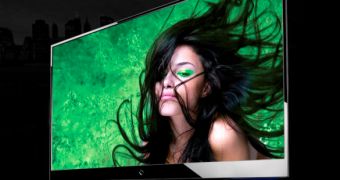With NBC, ABC, CBS and FOX, all bringing their HD content to the iTunes Store, what else could possibly sound better than Apple's set-top-box hooked up to Mitsubishi's laser-enabled flat TV set?
Mitsubishi, as some of you may know, announced earlier this year a revolutionary TV set, called LaserVue. As its name implies, the device uses laser beams to provide the widest range of rich, complex colors, along with the most clarity and depth of field. Precise and focused, the purity of laser light far surpasses current high definition technologies.
The color gamut as a percentage of BT.709 for LaserVue prototypes has been measured at approximately 200 percent, according to the company, delivering over twice the color of many of today's HDTVs. Brightness has been demonstrated at about 500 nits, Mitsubishi says, while Smooth120hz and x.v.Color round up the features list for LaserVue. All this being said, yesterday, Mitsubishi was proud to announce the immediate availability of its LaserVue at retailers across the US.
“Consumers are now coming to equate LaserVue with the industry's best performing high-definition television, and we are confident that HDTV enthusiasts everywhere will want to quickly get their hands on one,” said Frank DeMartin, vice president, marketing, Mitsubishi Digital Electronics America.
Following NBC's example this month, ABC, CBS and FOX have thrown in their HD content on the iTunes Store. Viewer favorites include “Grey’s Anatomy” and “Lost” from ABC, “CSI” and “CSI: Miami” from CBS, “Bones” and “Prison Break” airing on FOX, and “Heroes” and “The Office” from NBC Universal. In a recent press release, Apple insisted on pointing out that its iTunes Store had sold more than one million HD episodes since last month, when NBC brought its first HD programs to iTunes.
With the availability of a hefty set-top-box, a great online distribution service of HD content and, most recently, an actual laser-powered TV set, one can only wonder: is there any room left for visual improvements? Well, if not, there's always the sound experience that can be kicked up a notch.

 14 DAY TRIAL //
14 DAY TRIAL //